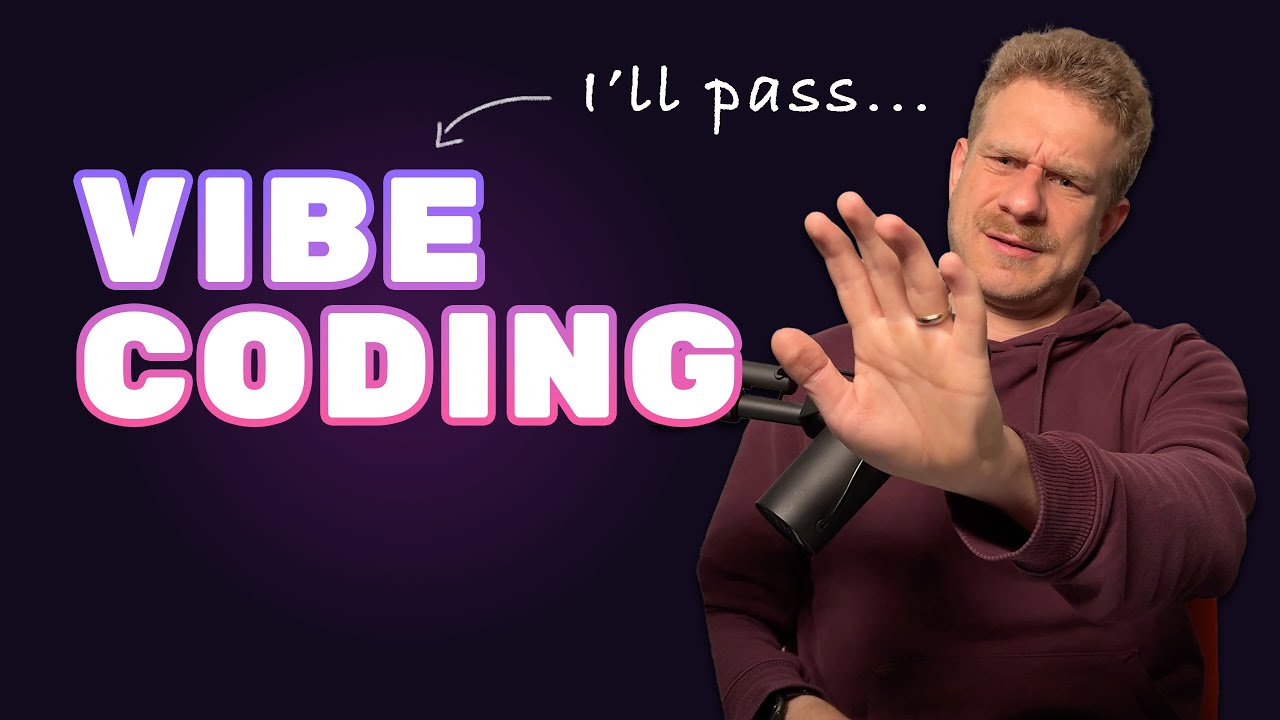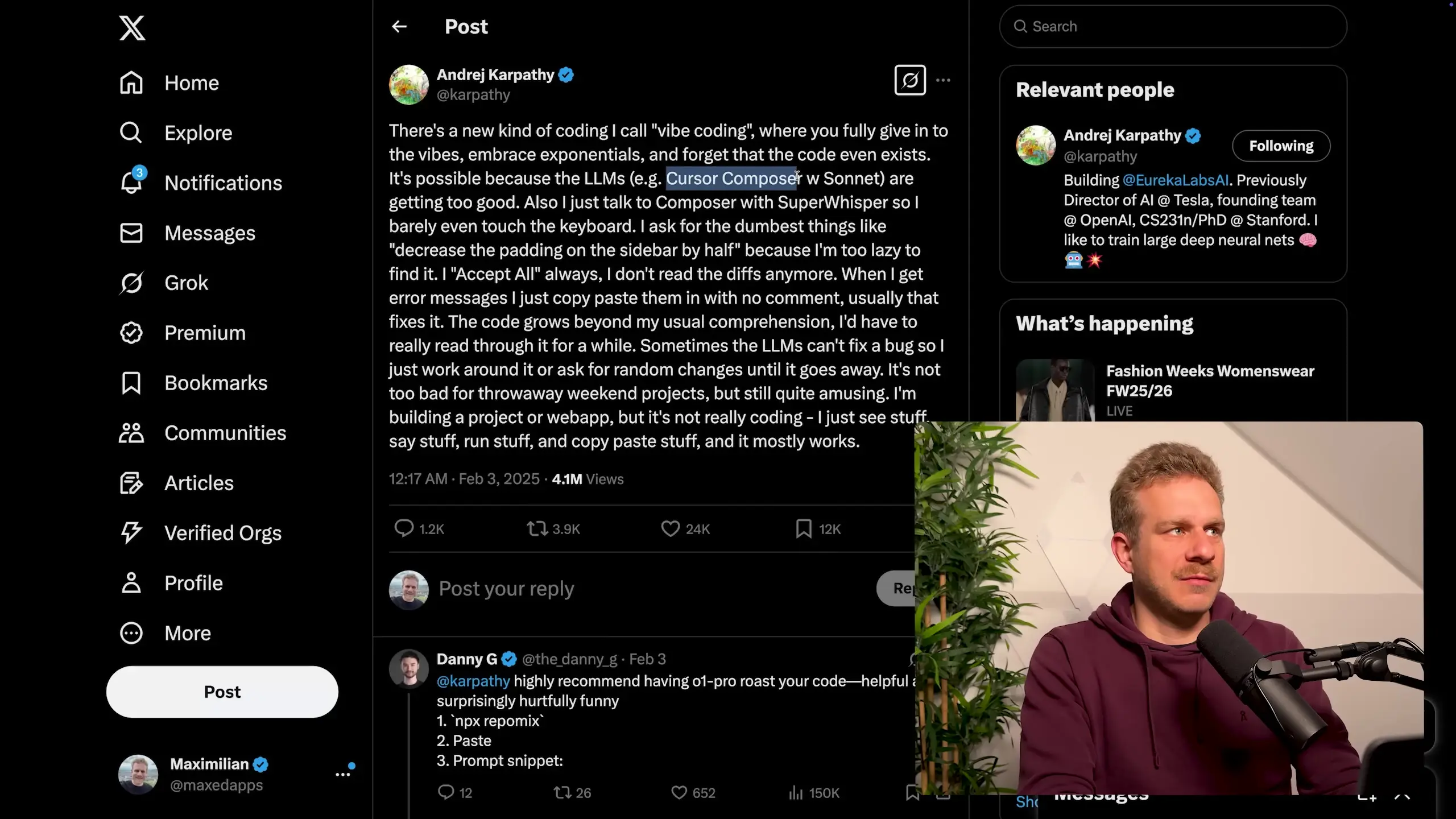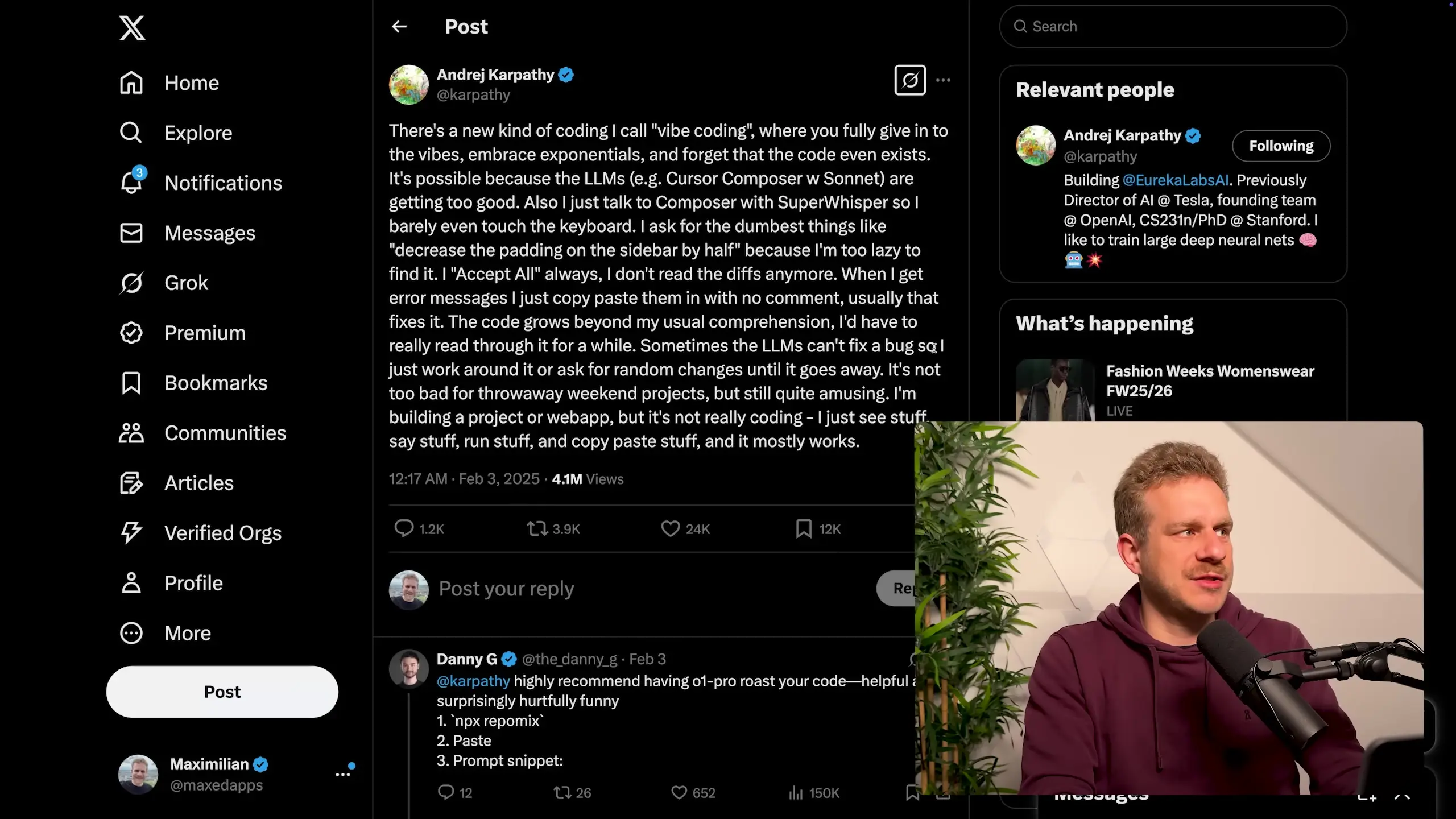
A new approach to software development has emerged in the programming world, and it's gaining traction quickly. 'Vibe coding' (or 'WIP coding') is a term first coined by Andre Karpathy in early 2024 that describes a fundamentally different way of creating applications. Rather than writing code yourself, vibe coding involves letting AI tools do all the work while you simply provide high-level instructions and accept whatever code gets generated.
What Exactly Is Vibe Coding?
At its core, vibe coding is about fully surrendering to AI tools and letting them handle all aspects of code creation. As described by its proponents, it means to 'fully give in to the vibes, embrace exponentials, and forget that traditional code even exists.' This approach has become possible because Large Language Models (LLMs) like GPT-4 have become increasingly capable of generating functional code.

The typical vibe coding workflow involves tools like Cursor (an AI-powered code editor) combined with LLMs like Sonnet or GPT-4. Some developers even use voice transcription tools like Super Whisper to literally talk their way through development, making requests like 'decrease the padding on the sidebar by half' without ever touching the keyboard.
The Key Principles of Vibe Coding
- Don't write code yourself - let the AI generate everything
- Don't review or validate the generated code
- Don't try to understand what's being created
- When errors occur, simply paste them back to the AI without analysis
- Accept that code will grow beyond your comprehension
- Work around bugs you can't fix or ask for random changes until something works
This programming vibe represents a complete departure from traditional software development practices where understanding your codebase is considered essential. Instead, the focus shifts to rapid iteration and accepting that you might not comprehend how your application actually works under the hood.
Real-World Examples of Vibe Coding
Several notable projects have emerged from the vibe coding approach. One prominent example is a web-based flight simulator built using JavaScript and Three.js. The developer reportedly used Cursor and continuously asked for new features and bug fixes without writing any code themselves. Despite its success in terms of deployment and even monetization, the project reportedly contained security vulnerabilities like cross-site scripting attacks at one point.
Other browser-based games have also been created using similar approaches, showing that complex interactive applications can indeed be built through the vibe coding method. However, the quality, security, and maintainability of these applications remain open questions.
The Limitations and Challenges of Vibe Coding

While vibe coding might seem like a revolutionary approach, it comes with significant limitations. For one, the process can be incredibly frustrating and time-consuming. When AI tools fail to generate working code or introduce bugs, the iterative process of describing problems and requesting fixes can become tedious and inefficient.
This coding vibe also creates a binary situation for non-programmers: you either get 100% of the way there with AI assistance, or you're stuck. If the AI can only solve 90% of your problem and the remaining 10% requires actual programming knowledge, you may hit an insurmountable wall.
- Time inefficiency - describing what you want can take longer than writing it
- Debugging challenges - when things break, fixing them without understanding the code is difficult
- Security concerns - AI-generated code may contain vulnerabilities
- Maintenance problems - future updates become challenging with incomprehensible code
- Limited learning - you don't build valuable programming skills for future projects
Vibe Coding vs. AI-Assisted Development
It's important to distinguish between vibe coding and AI-assisted development. The latter uses AI tools as assistants rather than replacements. Experienced developers have always used tools to speed up their work - from autocomplete to snippets. Modern AI assistants like GitHub Copilot or Cursor can be incredibly valuable when used to augment human coding rather than replace it entirely.

In AI-assisted development, the programmer remains in charge, understanding the code being written and making informed decisions. The AI speeds up the process by suggesting completions, generating boilerplate, or offering solutions to specific problems - but the human maintains control and comprehension.
The Future of Vibe Coding
As AI tools continue to improve, the programming vibe approach will likely become more viable. Future LLMs may generate more reliable, secure, and maintainable code, addressing many of the current limitations. However, several fundamental concerns will likely remain:
- Security and trust issues with code you don't understand
- The lack of skill development for future projects
- Challenges with debugging complex problems
- Difficulties maintaining and extending applications long-term
For one-off projects or prototypes, vibe coding might offer a quick path to results. For non-programmers who need to build something simple without learning to code, it could be transformative. However, for professional software development or projects that need to scale and evolve over time, the limitations may outweigh the benefits.
Finding Your Own Coding Vibe
The optimal approach likely lies somewhere between traditional coding and pure vibe coding. Using AI as a powerful assistant while maintaining understanding and control of your codebase combines the best of both worlds: the efficiency and assistance of AI with the reliability and maintainability that comes from human oversight.
For professional developers, investing in learning programming fundamentals remains valuable even in an AI-powered world. That knowledge becomes an asset that improves your ability to direct AI tools effectively and solve problems when AI suggestions fall short.
For hobbyists or those building simple projects, vibe coding might offer a viable path to creating functional applications without the steep learning curve of traditional programming. The key is understanding the tradeoffs and choosing the approach that best fits your specific needs and circumstances.
Conclusion
Vibe coding represents an interesting evolution in how we approach software development. While it may not replace traditional programming anytime soon, it offers a glimpse into a future where the barriers to creating software continue to lower. Whether you're a seasoned developer or someone who's never written a line of code, understanding this new programming vibe helps you make informed decisions about how to approach your next project in our increasingly AI-augmented world.
As with any tool or approach, the key is finding the right balance that maximizes productivity while ensuring quality, security, and maintainability. The coding vibe that works best for you will depend on your skills, goals, and the specific requirements of your projects.
Let's Watch!
Vibe Coding: The Future of Programming or Just a Trendy Shortcut?
Ready to enhance your neural network?
Access our quantum knowledge cores and upgrade your programming abilities.
Initialize Training Sequence